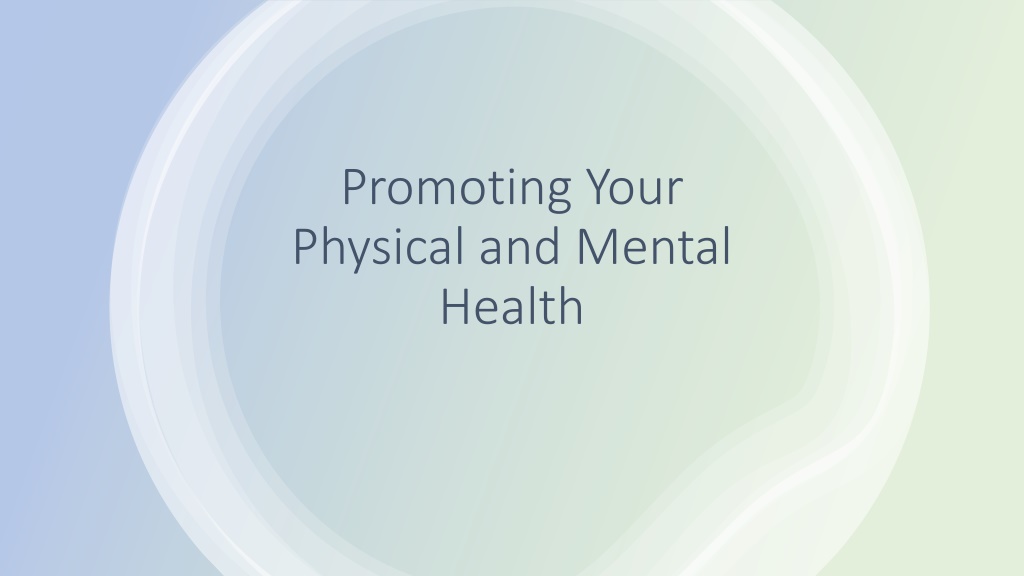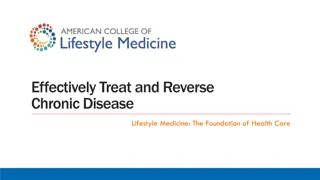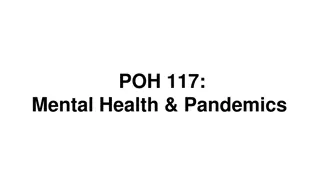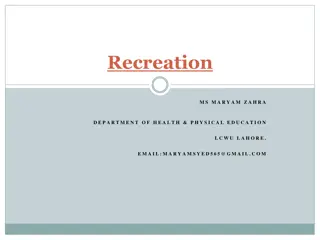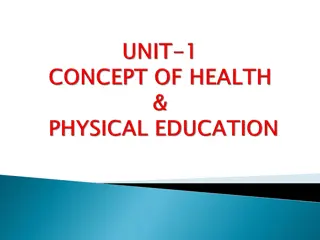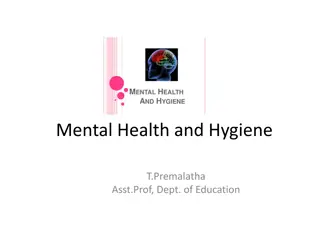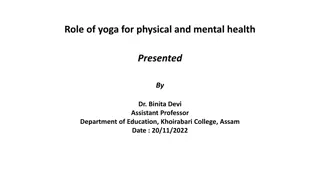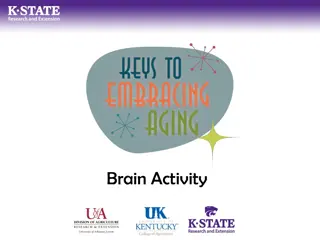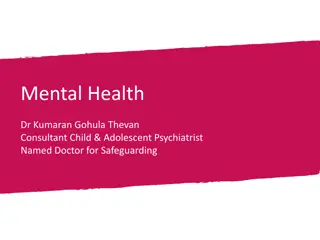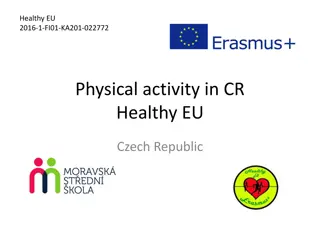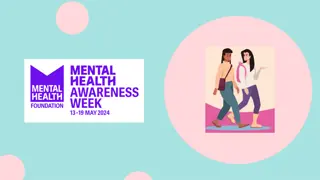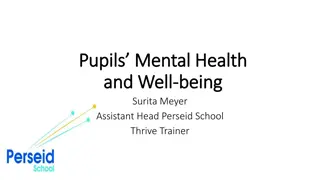Enhancing Your Physical and Mental Well-being Through Lifestyle Balance
Achieving a lifestyle balance is crucial for promoting your physical and mental health. Focus on nutrition, physical activity, leisure, rest, and reducing risk factors to maintain overall well-being. Educate others, especially children, on healthy food relationships. Incorporate regular physical activity and healthy eating habits to optimize brain health and prevent illness. Embrace leisure and rest for revitalization, and engage in activities like meditation, mindfulness, socializing, reading, or walking for relaxation.
Download Presentation

Please find below an Image/Link to download the presentation.
The content on the website is provided AS IS for your information and personal use only. It may not be sold, licensed, or shared on other websites without obtaining consent from the author. Download presentation by click this link. If you encounter any issues during the download, it is possible that the publisher has removed the file from their server.
E N D
Presentation Transcript
Promoting Your Physical and Mental Health
Achieving a Lifestyle Balance You cannot care for others unless you take care of yourself. Nutrition Physical Activity Leisure and Rest Reducing other risk factors.
Nutrition As Educators, one of our most important roles is to be a good models to the children in our care. As such we need to maintain a healthy relationship with food. However, is not the only reason why you should maintain a healthy outcome - As you will learn in Section 4: Nutrition, maintaining a healthy diet and regular physical activity is important for both your physical and mental well being. Food provides us with energy to complete the many tasks we need to do each day. Eating nutritional foods keeps our minds and bodies functioning at their optimum level. Eating nutritionally also helps to prevent injury and illness.
Physical Activity Healthy eating and physical activity is a winning combination. Brain health physical activity elevates and balances the three brain transmitters Serotonin, Norepinephrine and Dopamine each positively influences your mental health (Pimento and Kernsested, 2019).
Physical Activity According to the CDC Regular physical activity is one of the most important things you can do for your health. Being physically active can improve your brain health, help manage weight, reduce risk of disease, strengthen bone and muscles and improve your ability to do everyday things (CDC, 2023). Taken from: Centers for Disease Control and Prevention (CDC), 2020
Physical Activity: The Five (5)Fitness Components Cardiovascular Endurance: the ability of the heart and lungs to deliver the oxygen needed to perform a medium to high intensity activity for an amount of time. Flexibility: The ability to move muscles and joints though a range of motion. Strength: Our ability to exert force during an activity Muscular Endurance: The ability of our muscles to continue to perform an activity without fatiguing. Body Composition: The amount of body fat, muscle, bone and other tissues that make up our body.
Leisure and Rest Leisure and rest mean different things to different people. The commonality that we all share is that we all need time to relax. Taking time to relax allows us to reset. Rest allows our bodies and mind to repair and revitalize. Stress take a toll on both your mind and your body. Ways to Relax: Meditation Mindfulness Socialize Read a book Go for a walk Listen to music Photo by Jamie Street from upslpash.com
Reducing other risk factors to achieve a lifestyle balance Quitting smoking Limit alcohol Avoiding illegal drugs Take medication as prescribed. Schedule regular yearly physicals with your doctor Schedule regular dental check-ups Perform monthly self-examination of breasts or testicles for signs of cancer Practice safe sex Maintain your immunizations
